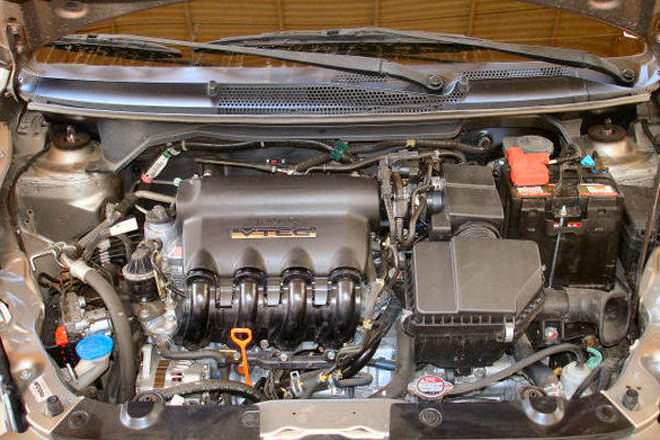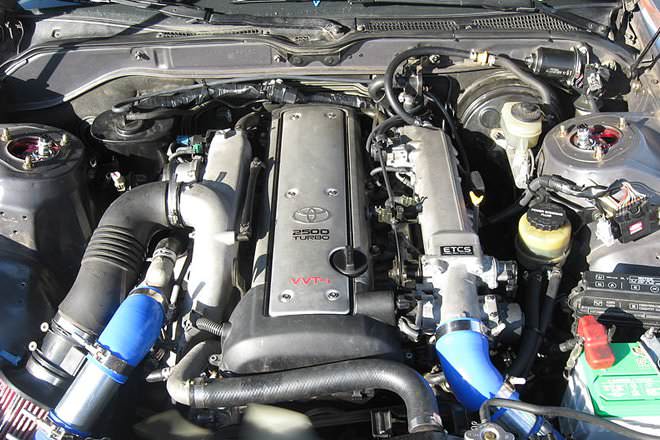VTEC and VVT-i systems were developed by Honda and Toyota respectively in order to improve the efficiency of car engines. VTEC (Variable Valve Timing and Lift Electronic Control) is a valvetrain system developed by Honda that allows engines to achieve turbo level specific output without the bad fuel efficiency that turbocharging normally introduces. VVT-i (Variable Valve Timing with intelligence) is a similar system developed by Toyota and has several variants among which VVTL-i (Variable Valve Timing and Lift intelligent system) is analogous to VTEC. VVTL-i was first used in 1999 Toyota Celica SS-II but has been discontinued because it does not meet Euro IV specs for emissions.
Comparison chart
| VTEC | VVT-i | |
| Launched | 1983 | 1996 |
| Working principle | It is a valve train system to improve the volumetric efficiency of a four-stroke internal combustion engine. It not only varies the timing but also lift the valves. | It varies the timing of the intake valves by adjusting the relationship between the camshaft drive (belt, scissor-gear or chain) and intake camshaft. Does not lift the valves. |
| Developed by | Honda | Toyota |
| Stands for | intelligent-VTEC (Variable Valve Timing and Lift Electronic Control) | Variable Valve Timing with intelligence |
| Intake camshaft | The intake camshaft is capable of advancing between 25 and 50 degrees when the engine is running. | The timing of the intake valves varies by adjusting the relationship between the camshaft drive (belt, scissor-gear or chain) and intake camshaft |
| phase changings | Phase changes are implemented by a computer controlled, oil driven adjustable cam gear | • Engine oil pressure is applied to an actuator to adjust the camshaft position |
| Perfomance | Phasing is determined by a combination of engine load and rpm, ranging from fully retarded at idle to somewhat advanced at full throttle and low RPM | Adjustments in the overlap time between the exhaust valve closing and intake valve opening results in improved engine efficiency. |
Working Principle
In an automobile engine the intake and exhaust valves move on a camshaft. The timing, lift and duration of the valve are determined by the shape of the lobes that make the shaft move. Timing refers to an angle measurement of when a valve is opened or closed with respect to the piston position and lift refers to how much the valve is opened.
i-VTEC uses not only timing but also the lift aspect of the valves, while VVTi uses only the timing aspect. The technology that uses timing and lift aspect developed by Toyota is called VVTL-i and can be equated with that of i-VTEC of Honda.
i-VTEC
Honda introduced i-VTEC technology in Honda’s K-series four cylinder engine family in 2001. With this technology
- The intake camshaft is capable of advancing between 25 and 50 degrees when the engine is running.
- Phase changes are implemented by a computer controlled, oil driven adjustable cam gear.
- Phasing is determined by a combination of engine load and rpm, ranging from fully retarded at idle to somewhat advanced at full throttle and low RPM.
- The effect is further optimization of torque output, especially at low and midrange RPM.
- Valve lift and duration is still limited to distinct low- and high-RPM profiles.
VVTi
Toyota introduced VVT-i in 1996. With this technology
- The timing of the intake valves varies by adjusting the relationship between the camshaft drive (belt, scissor-gear or chain) and intake camshaft.
- Engine oil pressure is applied to an actuator to adjust the camshaft position.
- Adjustments in the overlap time between the exhaust valve closing and intake valve opening results in improved engine efficiency.
Did you love the story? You can also share YOUR story and get it published on Bizna Click here to get started.





